Types of Computer Network
A computer network is a group of interconnected devices that can communicate with each other and share resources. Computer networks are used to enable communication and data transfer between devices, including computers, printers, servers, and other network-enabled devices. There are various types of computer networks, each with their unique features and use cases. In this article, we will explore the different types of computer networks in detail.
- Local Area Network (LAN)
A Local Area Network (LAN) is a type of computer network that is confined to a small geographic area, such as an office building or a school campus. LANs are used to enable communication and data transfer between devices within a small area, and they are usually owned and managed by a single organization. LANs are typically faster and more reliable than wide area networks (WANs) because they are not affected by the internet's latency and bandwidth limitations.

LANs can be wired or wireless. In a wired LAN, devices are connected to each other and to the network using Ethernet cables. In a wireless LAN, devices connect to the network using Wi-Fi.
- Wide Area Network (WAN)
A Wide Area Network (WAN) is a type of computer network that spans a large geographic area, such as a country or a continent. WANs are used to enable communication and data transfer between devices in different locations, and they are typically owned and managed by multiple organizations. WANs are slower and less reliable than LANs because they are affected by the internet's latency and bandwidth limitations.
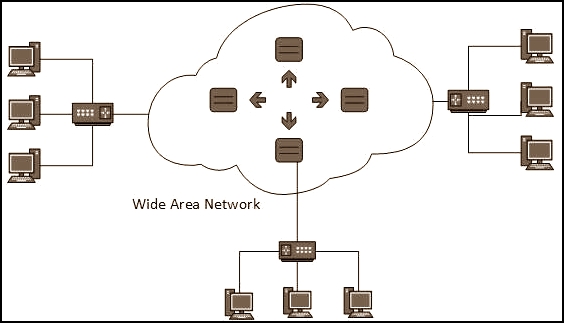
WANs can be wired or wireless. In a wired WAN, devices are connected to each other and to the network using dedicated leased lines or the public internet. In a wireless WAN, devices connect to the network using cellular networks.
- Metropolitan Area Network (MAN)
A Metropolitan Area Network (MAN) is a type of computer network that covers a large geographic area, such as a city or a metropolitan area. MANs are used to enable communication and data transfer between devices within a large area, and they are typically owned and managed by a single organization or a consortium of organizations.
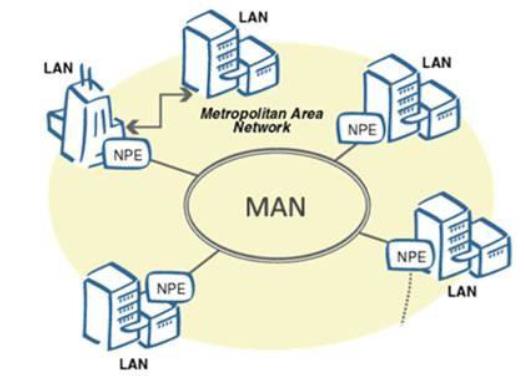
MANs can be wired or wireless. In a wired MAN, devices are connected to each other and to the network using Ethernet cables or fiber optic cables. In a wireless MAN, devices connect to the network using Wi-Fi or other wireless technologies.
- Personal Area Network (PAN)
A Personal Area Network (PAN) is a type of computer network that is used for communication and data transfer between devices that are in close proximity to each other, such as a computer and a smartphone or a smartwatch. PANs are typically used for personal or home use, and they are not connected to the internet.
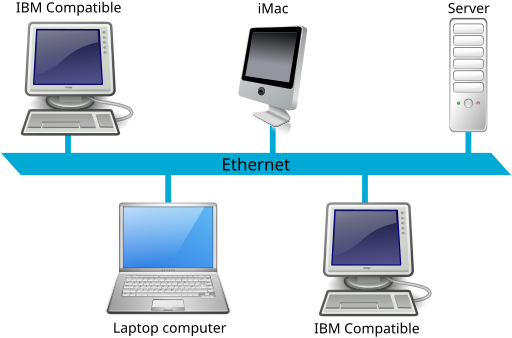
PANs can be wired or wireless. In a wired PAN, devices are connected to each other using cables or USB connections. In a wireless PAN, devices connect to each other using Bluetooth, infrared, or other wireless technologies.
- Campus Area Network (CAN)
A Campus Area Network (CAN) is a type of computer network that is used to connect devices within a campus or a university. CANs are similar to LANs, but they cover a larger geographic area and may include multiple buildings or facilities.
CANs can be wired or wireless. In a wired CAN, devices are connected to each other and to the network using Ethernet cables or fiber optic cables. In a wireless CAN, devices connect to the network using Wi-Fi or other wireless technologies.
- Storage Area Network (SAN)
A Storage Area Network (SAN) is a type of computer network that is used to provide high-speed access to storage devices, such as hard drives, solid-state drives, and tape drives. SANs are typically used in data centers and other large-scale computing environments, where fast and reliable access to storage devices is critical SANs can be wired or wireless, but they are typically wired.
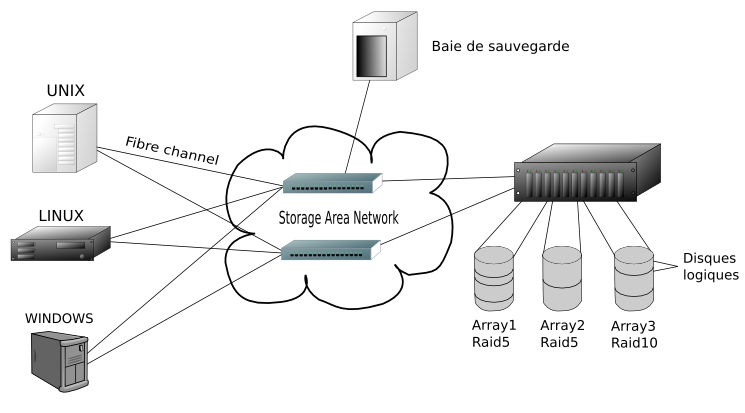 SAN (Storage Area Network)
SAN (Storage Area Network)In a SAN, devices are connected to the network using Fibre Channel, iSCSI, or other high-speed networking protocols. SANs are designed to provide fast and reliable access to storage devices, and they are typically used to store large amounts of data that need to be accessed quickly, such as databases and multimedia files.
- Virtual Private Network (VPN)
A Virtual Private Network (VPN) is a type of computer network that is used to enable secure remote access to a private network, such as a company's internal network or a university's network. VPNs use encryption and other security measures to ensure that remote users can access the network safely and securely.
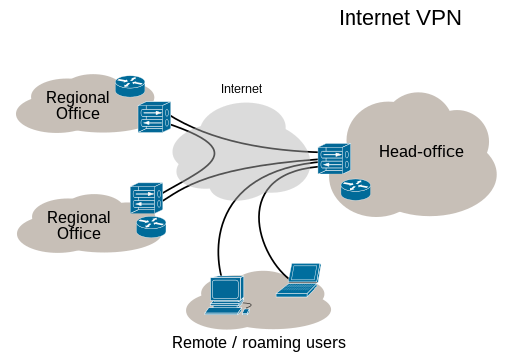
VPNs can be wired or wireless, but they are typically wired. In a VPN, remote users connect to the network using the internet and a VPN client, which encrypts their traffic and tunnels it through the internet to the private network.
- Peer-to-Peer Network (P2P)
A Peer-to-Peer Network (P2P) is a type of computer network that is used to enable direct communication and data transfer between devices without the need for a central server or network infrastructure. P2P networks are typically used for sharing files, such as music and videos, and for online gaming.

P2P networks can be wired or wireless, but they are typically wireless. In a P2P network, devices connect to each other directly using Wi-Fi or other wireless technologies, or they connect to each other through the internet using a P2P client.
- Cloud Network
A Cloud Network is a type of computer network that is used to provide on-demand access to computing resources, such as virtual machines, storage, and software applications. Cloud networks are typically hosted by cloud service providers, such as Amazon Web Services, Microsoft Azure, and Google Cloud Platform.
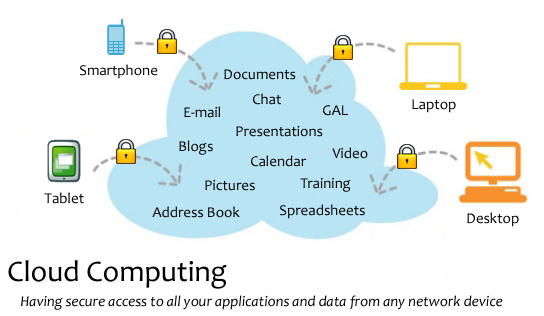
Cloud networks can be wired or wireless, but they are typically accessed over the internet using a web browser or a cloud client. Cloud networks provide businesses and individuals with a flexible and scalable computing infrastructure that can be accessed from anywhere in the world.
There are various types of computer networks, each with its unique features and use cases. Local Area Networks (LANs) and Wide Area Networks (WANs) are the most common types of computer networks, and they are used to enable communication and data transfer between devices within a small area or a large geographic area, respectively. Other types of computer networks, such as Metropolitan Area Networks (MANs), Personal Area Networks (PANs), Campus Area Networks (CANs), Storage Area Networks (SANs), Virtual Private Networks (VPNs), Peer-to-Peer Networks (P2P), and Cloud Networks, are used for specific purposes and in specific contexts. Understanding the different types of computer networks can help you choose the right network for your needs and ensure that your devices can communicate with each other effectively and securely.
